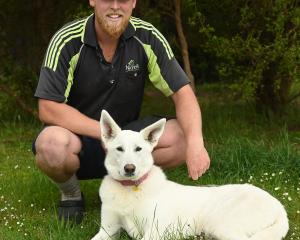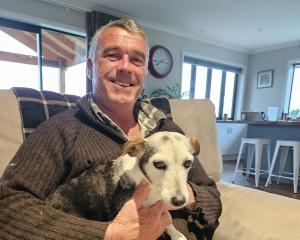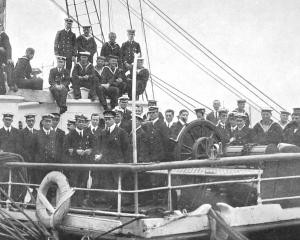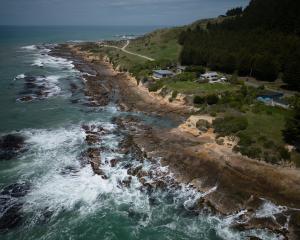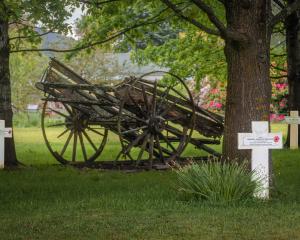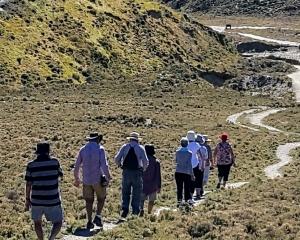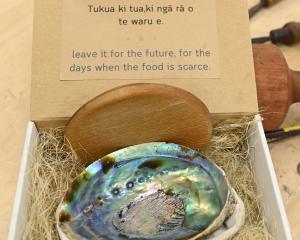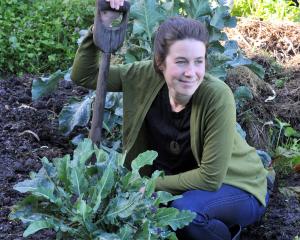
Writing under the nom de plume "Pakeha", Thomson’s detailed descriptions of botany, vegetation, clearance rates and suburban development are regarded as among the best contemporary records of Dunedin.
A collection of Peter Thomson’s published articles has been compiled by his great granddaughter, Mary Skipworth, and can be viewed at http://genealogy.ianskipworth.com/pdf/peterthomson.pdf
In this description about the second part of his holiday walking to the Tuapeka goldfields, we join him as he reaches Lawrence to find the nightlife a little underwhelming.
Next morning I started before breakfast to examine a quartz reef which has been recently opened in the hills on the south side of the main valley, about a mile and a half from the town.
A battery of ten stamps has been erected, and everything is nearly ready for starting work, the fixing of the turbine, etc, only remaining to be finished. The manager, Mr Hill, accompanied me over the works, and obligingly explained everything very clearly.
I went into the drive, which is carried a short way into the hillside, and found the reef to be a curious agglomeration of blueish clay and thin veins of decomposed quartz running through it.

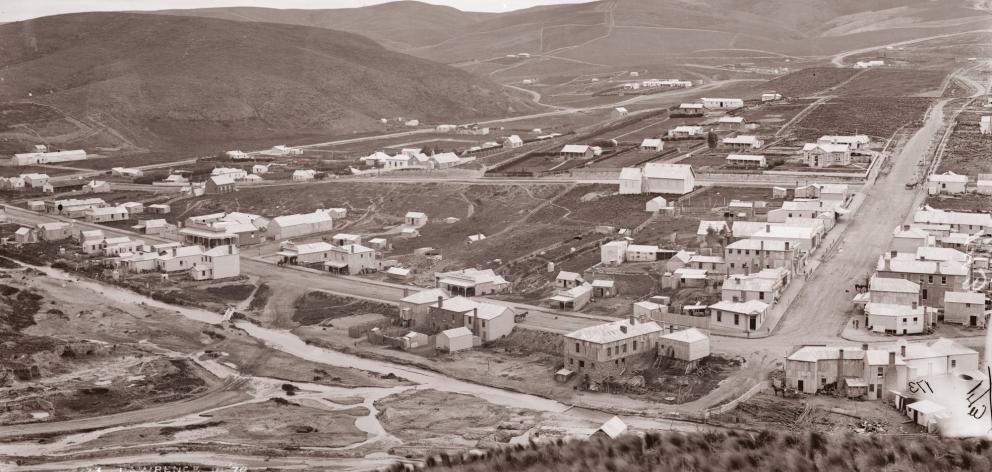
However, there was really little to be seen. After a round through the principal streets I found my way back to the hotel, somewhat disappointed at the small amount of stir or business going on considering it was Saturday night.
The round was repeated a little later, but with the same result. Next morning was fine, and after breakfast I walked off up Gabriel’s Gully, which debouches on the Tuapeka close to the end of Ross place, on my way to the famous BLUE SPUR.
Gabriel’s Gully, as is now well known, is filled up to a great depth with tailings, and the road is carried up on a comparative level, over the sites of what were only a few years ago the busy haunts of the digger. Perhaps nowhere in New Zealand has so great a change in the appearance of the country taken place as here. The path up the gully is sometimes down on the tailings, and sometimes on the bank of a race, past all manner of disused mining works, a small stream of dirty water occupying a channel which sometimes flowed to one side and sometimes to the other. I was not long ere I was opposite the claims, but beyond a rugged quarry-looking chasm in the hill before me I could make nothing of it.
So after looking about a little I climbed a steep hill, for the purpose of finding some one who could put me up to the process.
In this I was fortunate, for the first person I met was Mr McIntosh, manager of one of the claims, who very kindly took me over the whole Spur and explained everything necessary, to my great delight. And not only so, but in passing through one of the claims he manipulated a handful of blackish mud, and showed me the precious metal for which all this turmoil in the district had been caused.
After watching him for a little he put in my hand the "prospect", a small quantity of fine grains of gold like snuff, which I carefully put in a bit of paper and brought away with me. Mr McIntosh took me home to dinner with him, and afterwards accompanied me to the house of a friend, where we had hardly arrived when heavy rain came on, and continued throughout the rest of the day and evening, compelling me to remain on the Blue Spur all night.
Next morning was fine, with a bright sun, and after breakfast I started to work the bush in the upper part of Munro’s Gully, on the opposite side of the Spur. On the tailings below I found a ten-stamp battery hard at work, driven by a turbine, crushing the cement brought up from a drive into the hill. It did make a great row, and after looking on a little gave me quite a headache. From the machine, I proceeded across the flat and up the gully towards the remains of what had been thick bush at one time. This was rather hard work, as the scrub was thick and wet with the heavy rain of the past night, which the sun had not yet reached in the close gully.
Except the beeches, which were growing abundantly, there was little difference between the plants here and those in any similar gully near Dunedin, and there were only 14 ferns noticed.
I worked up till there was no possibility of getting farther without a ladder, and then turned to the left and climbed the bank into some very dense scrub, finding, on a small terrace, a spear-grass new to me, but of which I discovered another plant in the Botanic Garden, since returning home. Getting up the hill was a very tough job, and I was both hot and wet when I emerged close to a solitary house, standing on the hillside.
I went in and sat down for a little, and had a much needed rest and a drink, and, after some conversation with the inmate, continued my way up hill, till I reached the top of the range.
From there I had a fine view of the country all round to the south and east, whilst to the west and north, there were only more ranges. Turning to the right, I descended the hill a good bit, and then walked along the bank of a race till I came to Hale’s Dam, which was then undergoing repair, and was directed how to get back to the Spur.
On my way, I had a good opportunity of seeing the immense water-power brought to bear on those works, for down in a deep hollow on my left were roaring and rushing two or three strong streams of water, side by side, on their way to tumble over the faces, or to drive the crushing machines below.
This is an altogether strange locality. I was not long in scrambling down the Spur to the tailings again, which, by the way, are said to be about 120ft deep opposite the workings.
There are two batteries here, one at work, the other nearly ready. After having a good look round, I proceeded up the hill again to my friend’s house, had dinner, and proceeded back to Lawrence by the hill road, from various points on which I had a good view of the Blue Spur and its surroundings.
NEXT WEEK: Pakeha is on the home-stretch but has a rather disagreeable experience on the Cobb & Co coach.

